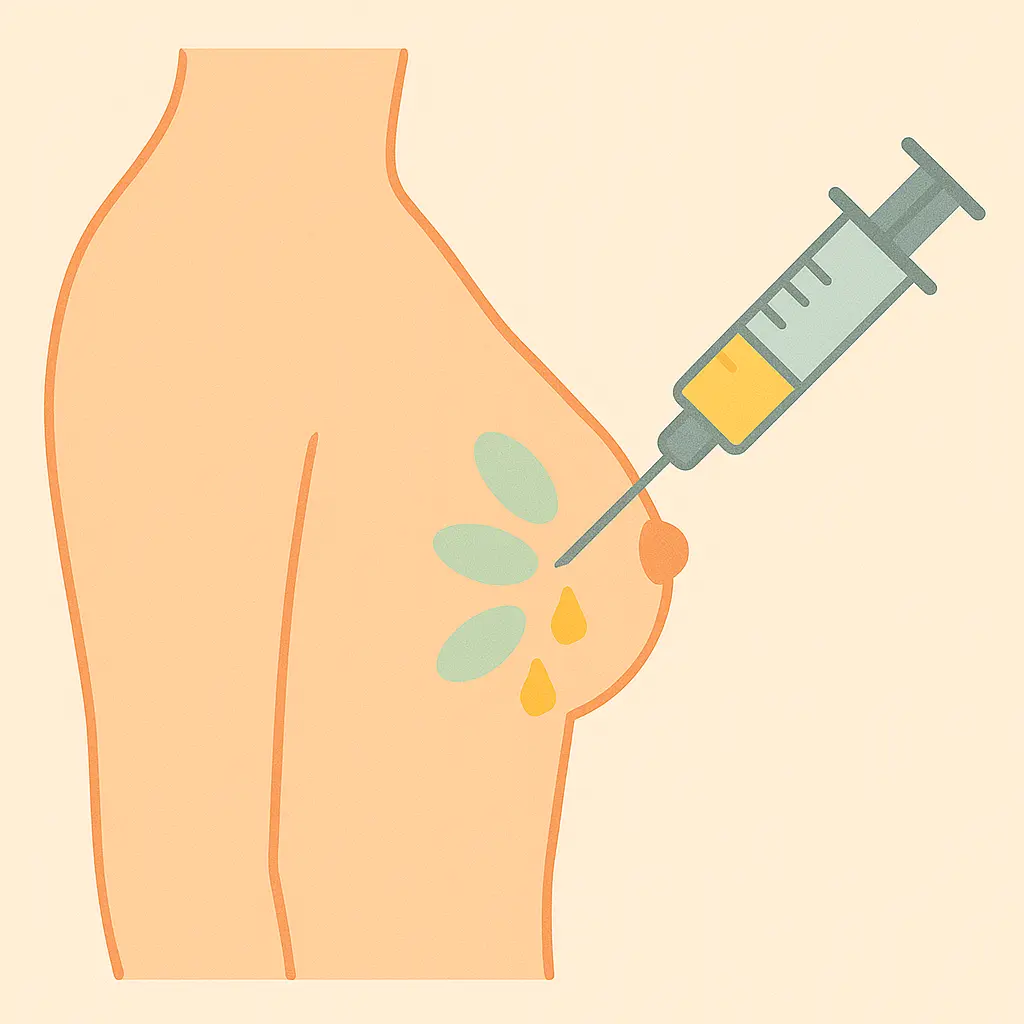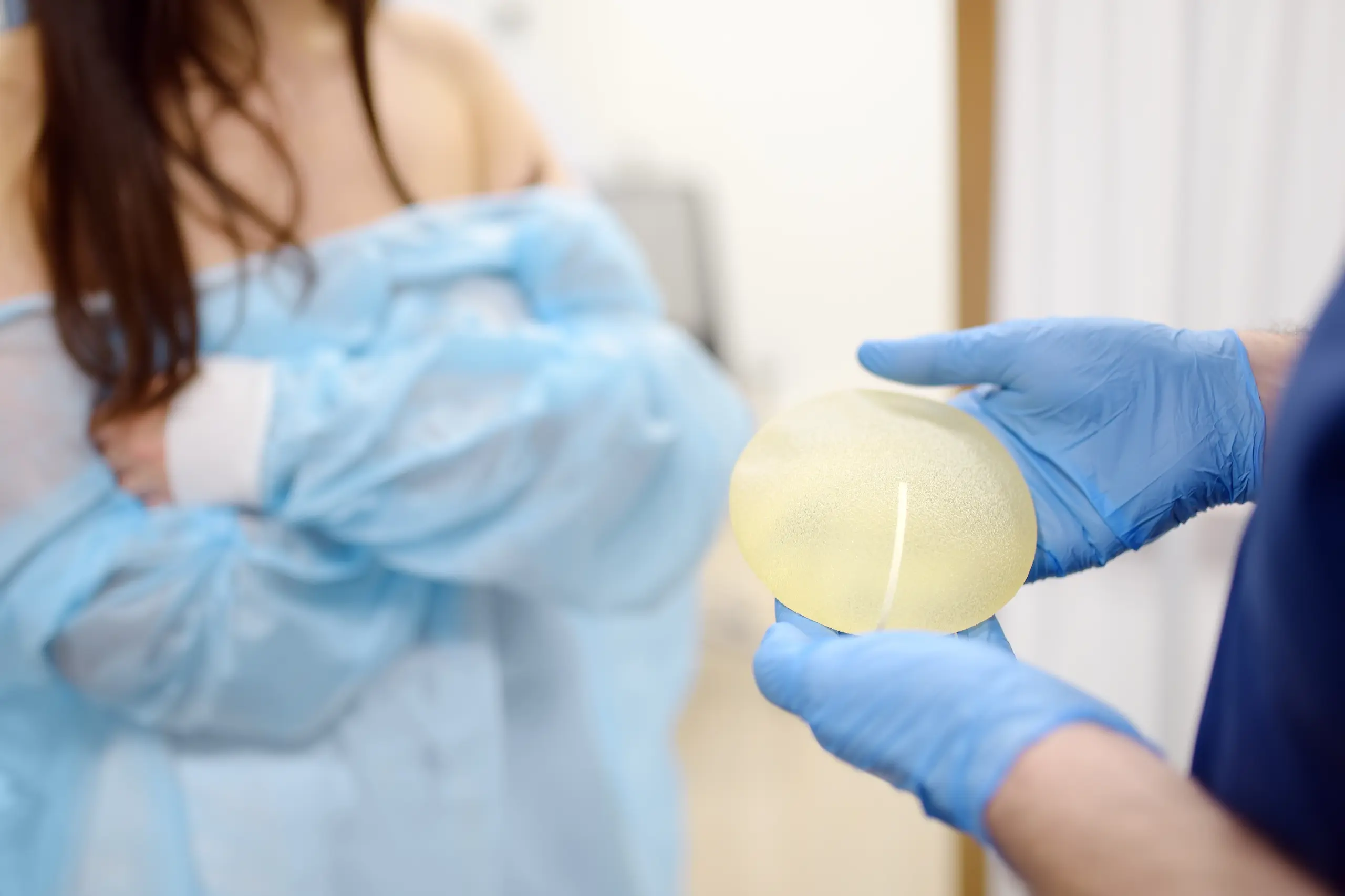If you’re thinking about enhancing your breasts, one of the first crossroads you’ll come to is this whether you should go with breast implants or a fat transfer. It’s a bit like choosing between a beautifully tailored dress and a custom-knit sweater, both are fantastic, but they achieve their results in completely different ways.
In this guide we’ll walk you through the key differences, the pros and cons, and what you can realistically expect from each option. Let’s demystify this together.
What’s the Difference Between Breast Implant and Fat Transfer
Before we dive into the details, let’s get the basic concepts straight.
- Breast Implant: This involves placing a medical-grade silicone shell, filled with either cohesive silicone gel or saline, into your breast tissue to increase volume and change shape.
- Fat Transfer: Also known as autologous fat grafting, this is a two-in-one procedure. We liposuction fat from an area where you have a bit extra (like your tummy or thighs), purify it, and then carefully re-inject it into your breasts.
Think of it as adding a ready-made structure versus enhancing your own natural foundation.
Here’s a side by side comparison for both options:
| Feature | Breast Implant | Fat Transfer |
|---|---|---|
| Best For | Larger size increase, dramatic projection, and upper pole fullness. | Modest size increase, natural look, and added body contouring. |
| Look & Feel | Can feel firmer, especially in thin women. Modern implants feel more natural. | Very soft and natural, it’s your own tissue. |
| Procedure Type | One surgery focused on the breasts. | Two-step: liposuction + fat grafting. |
| Scarring | Small, well-hidden scars (under breast, around areola, or armpit). | Tiny scars at liposuction and injection sites that fade well. |
| Recovery Time | 4–6 weeks, avoid heavy lifting and intense exercise. | Breast recovery is faster, donor sites need healing and compression garments as well. |
| Longevity | May need replacement every 10–15 years. | Permanent fat retention, but size changes with weight. |
What to Consider When Making Your Decision
Beyond the basic comparisons, here are some deeper implications that are crucial for your decision-making process.
Your Starting Point is Key
Your existing anatomy plays a huge role. If you have very little natural breast tissue, implants will be necessary to achieve a significant size change. Fat transfer requires a certain amount of “scaffolding” to hold the new fat cells. Furthermore, you need to have sufficient excess fat in other areas to harvest.
The Realistic Outcome
Managing expectations is everything.
- With implants, we can predict size and shape with a high degree of accuracy.
- With fat transfer, there is an element of unpredictability. We typically overfill the breasts slightly, knowing that a portion of the fat, anywhere from 20-50%, will be absorbed by the body. This process settles over 3-6 months, revealing the final, permanent result.

What Are the Risks of Breast Implant And Fat Transfer?
While both procedures are considered safe when performed by a qualified surgeon, every surgery carries some risks. Understanding them will help you make an informed, confident choice.
Risks of Breast Implant include:
- Capsular Contracture: Scar tissue hardening around the implant, which can cause discomfort or changes in breast shape.
- Implant Rupture or Leakage: Rare but possible, requiring revision surgery.
- Infection or Poor Healing: Can happen with any surgery, though minimised with expert aftercare.
- Changes in Sensation: Temporary or permanent numbness in the nipple or breast.
Some risks can also depend on the type of implant used. Our guide on Breast Implant Types and Shapes explains how materials like silicone or saline may influence feel and long-term safety.
Risks of Fat Transfer include:
- Fat Absorption: Some transferred fat may be naturally reabsorbed by the body, affecting the final size.
- Fat Necrosis: Formation of small, firm lumps from fat that doesn’t survive.
- Asymmetry: If fat takes differently in each breast.
- Multiple Sessions: Sometimes needed to achieve the desired volume.
Can You Combine Breast Implant and Fat Transfer?
Yes, combining breast implant surgery and fat transfer is a growing trend for women who want both the volume and projection of implants plus the soft, natural contour that comes from their own fat. It’s often called composite breast augmentation, and it’s one of the most customised approaches offered by cosmetic clinics.
Why Combine the Two?
- Maximise Shape & Softness: Implants create structure, while fat transfer smooths edges and blends the implant into your natural breast tissue.
- Customised Symmetry: Fat grafting can fine-tune uneven breasts or correct small imperfections implants alone may not address.
- Dual Benefit: You get fuller breasts while also slimming and contouring areas where the fat is taken from like the waist, thighs, or abdomen.
Is It Right for You?
A combined approach might be your ideal solution if you’re looking for a significant increase in size that still feels soft and natural. This is a great path if you desire a more pronounced result than fat transfer alone can typically offer, but want to avoid the sometimes overly defined look that can come with just an implant.
Fat transfer is also perfect if you have enough donor fat available and want to use it to create a more seamless transition around the implant, softening the upper edge for a beautifully gradual and natural-looking contour.
If you’re still unsure whether you need added volume, a lift, or both, you may find our guide on Breast Lift vs Breast Augmentation helpful, it explains how each procedure compares in terms of results, recovery, and overall outcome.
Frequently Asked Questions (FAQs)
Yes, absolutely. It is perfectly safe to have a mammogram with breast implant. It is crucial that you go to a radiology unit experienced in imaging patients with implants, as they will use special displacement techniques to get the best possible view of your natural breast tissue. Always inform the radiographer beforehand.
Partially. The fat that “takes” remains long-term, though changes in your weight can affect size. However, the percentage of fat that stays varies. Many women experience some reabsorption over time.
Implants are ideal for significant enlargement and shape control. Fat transfer is best for modest volume and a natural feel. Combining both is increasingly popular using fat to camouflage implants or refine contours. This offers volume, shape, and natural texture all in one.
Results can vary. Most women retain around 50–70% of the injected fat, but this depends on metabolism, lifestyle, and surgical technique.
Fat transfer typically offers a more subtle enhancement, think about a half to one cup size per session. In contrast, implants allow for a much larger and more predictable volume increase, sometimes several cup sizes at once. Fat transfer suits those looking for a natural change rather than something dramatic.
Ready to Explore The Best Option For You?
Your journey to a more confident you begins with a single, informed decision. Our team is here to provide the clarity and expert guidance you need every step of the way. You can discuss your vision in a free consultation with our specialists.






